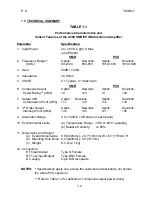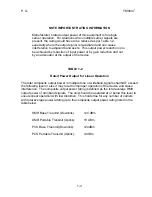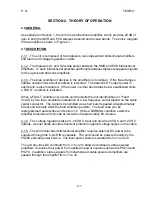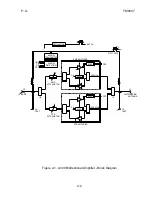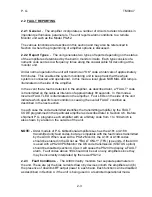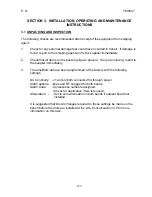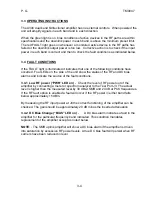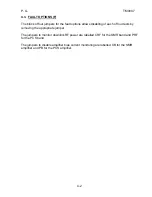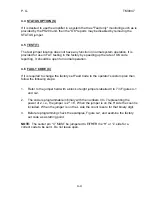
P. G.
TM0047
1-1
SECTION 1. GENERAL INFORMATION
1. INTRODUCTION
1.1.1
Scope of Manual
- This manual is intended to familiarize service personnel
working on the Dual Band Bidirectional Amplifier A300 with all pertinent aspects of the
amplifier. Included in this manual are a brief physical description, a technical summary,
installation information and operating data.
1.1.2
Purpose of Equipment
- The A300 amplifier is used as a drop-in booster for
SMR (800 MHz trunking) and PCS signals carried on 50 ohm coax cable. The amplifier
will simultanously amplify signals in the SMR and PCS transmit bands in one direction
and the SMR and PCS receive bands in the opposite direction. A typical use of the
A300 is to provide SMR and PCS phone coverage in underground installations.
1.1.3
Physical Description
- The bidirectional amplifier, shown in Figure 3-1, is
designed to be mounted on a flat vertical surface. The unit has two N connectors for
connection to the distribution cable and two BNC test ports to check RF signals. A 5-pin
DIN receptacle is provided for local power source connection. Color coded indicators
provide visual display of the unit's operating status.
1.1.4
Electrical Description
- The bidirectional amplifier provides approximately 20
dB of gain for signals in the 804 - 824 MHz and 1850 - 1910 MHz bands in the direction
of J1 to J2 (antenna to base) and the same amount of gain for signals in the 850 - 870
MHz and 1930 - 1990 MHz bands in the opposite direction (J2 to J1).
1.1.4.1. - The unit is locally powered through a 5-pin DIN receptacle. The P.G.
Electronics PS293 power source should be used to power the unit. The unit provides
DC continuity from J1 to J2 to allow powering of downstream amplifiers from upstream
power sources such as PS212 and PS213. Local power is isolated from J1 and J2.
1.1.4.2. - The unit monitors bias conditions of active devices in the RF path and
monitors downlink power in both bands. If one of these devices draws more or less than
a predetermined limit, or if the RF downlink power is low then the FAULT indicator will
go on. Under normal operating condition only the green NORMAL indicator will be on.
1.1.4.3. - If a FAULT condition is detected the unit transmits a low frequency
identification code along the cable center conductor. The burst transmission is repeated
at approximately 80 second intervals, while a fault condition exists. The fault reporting
circuitry is powered from the cable.
1.1.4.4 - If a NORMAL condition exists in the amplifier a low frequency OK identification
code will be transmitted on the cable at intervals of approximately 80 minutes.
1.1.4.5 – The unit has an adjustable attenuator in each band to allow operation at
reduced gain. The attenuator is settable in 1 dB steps up to 15 dB either manually or by
using an optional AUTOSET control board.






